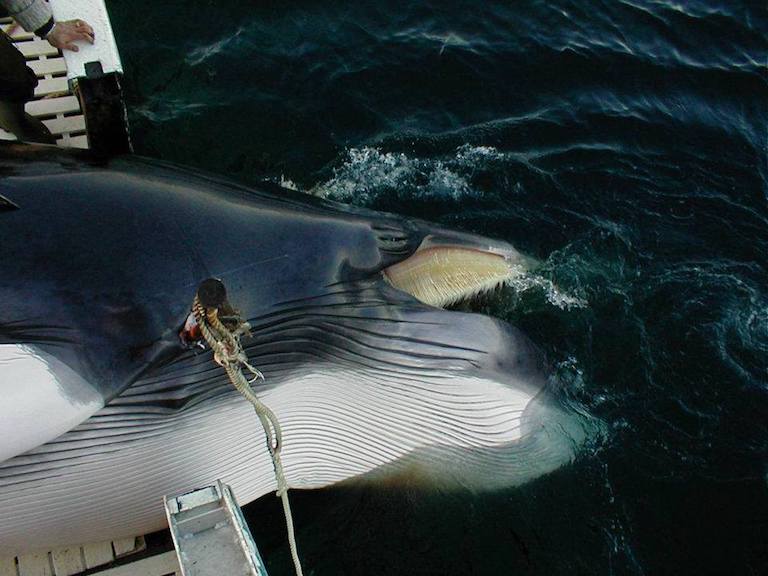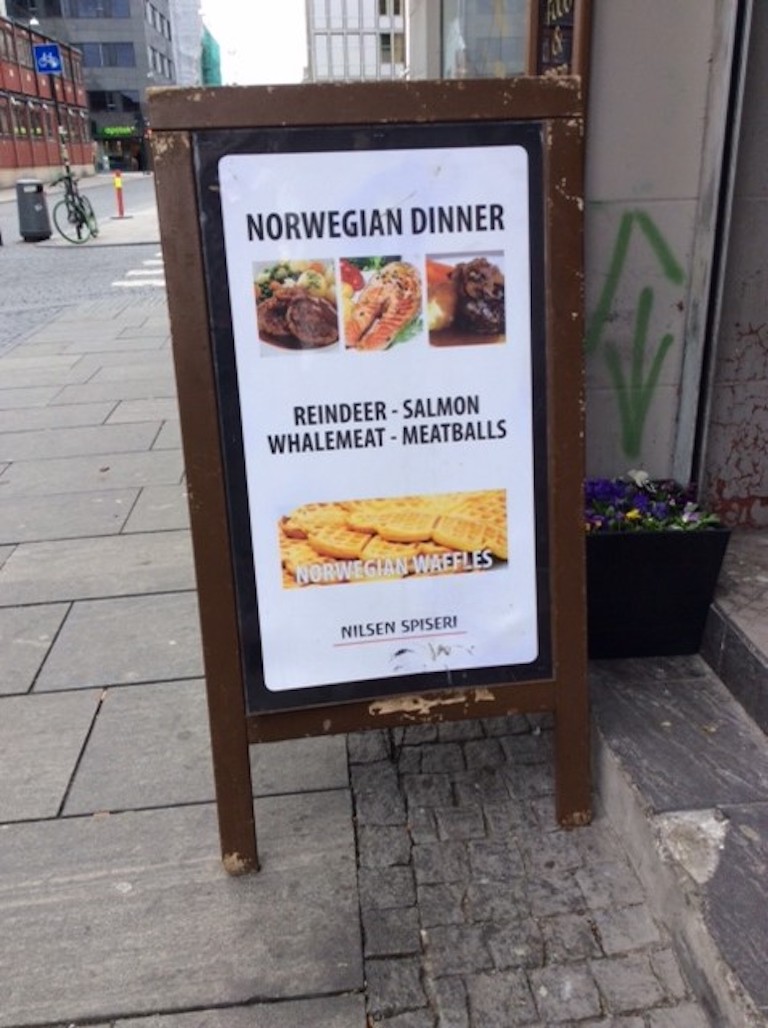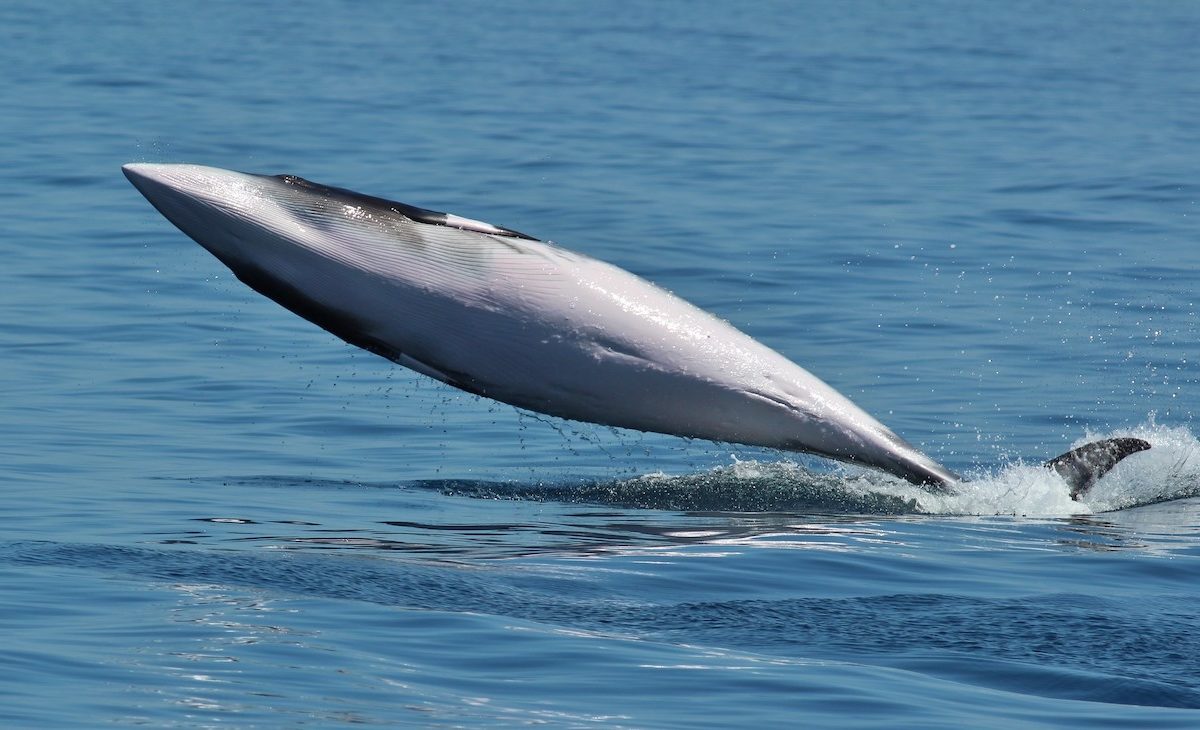- Norway has announced that it will target up to 1,278 common minke whales in its upcoming whaling season, which is the same quota as the past two years.
- While the Norwegian government says its whaling program is sustainable, some scientists, conservationists and animal welfare experts counter this claim.
- These anti-whaling advocates also point to a growing body of evidence that suggests that whales play a pivotal role in regulating the marine ecosystem, and that whales are worth more alive than dead.
- There has been a global moratorium on commercial whaling since 1986, but Norway chooses to reject this ban.
Norway plans to kill up to 1,278 minke whales this year, according to a recent announcement made by the country’s fisheries ministry. This is the same quota as the previous two years, although whalers only killed 503 common minke whales (Balaenoptera acutorostrata) in 2020, and 429 in 2019.
“Norwegian whaling is about the right to utilize our natural resources,” Odd Emil Ingebrigtsen, Norway’s minister of fisheries and seafood, said in a statement in Norwegian. “We manage on the basis of scientific knowledge and in a sustainable manner. In addition, whales are healthy and good food, and Norwegians want minke whales on their dinner plate.”
In 1982, the International Whaling Commission (IWC) issued a global moratorium on commercial whaling, which went into effect in 1986. But Norway, despite being a member of the IWC, formally objected to this ruling, and has continued to kill whales every year since 1993.
While proponents argue that Norway’s whaling program is sustainable, some scientists, conservationists, and animal welfare advocates disagree, arguing that it is unsustainable, unethical, and runs counter to the country’s conservation goals.

“Humans have a very poor track record of doing anything sustainable when it comes to whaling, and we shouldn’t continue to allow those kinds of processes to occur, just because someone says they can do it sustainably,” Ari Friedlaender of the University of California, Santa Cruz, and told Mongabay in an interview. “The fact that there is an international ban on commercial whaling since 1986 strongly indicates that there’s not a way to do it in a way that is going to be sustainable.”
Friedlaender, who has studied cetaceans all over the world, says that whales play a pivotal role in regulating the marine ecosystem, so taking them out of the oceans could negatively impact the environment — and in ways we may not fully understand.
“The more we learn about whales, the more we recognize that they provide ecosystem services at a range of scales,” Friedlaender said. “The presence of whales and the abundance of whales can actually stimulate growth because of how they circulate nutrients that are limiting in the environment — and if you take a lot of animals out of a small area, you can impact the productivity of that ecosystem [and] upset the balance of the ecosystem too. And if you take away a significant predator that eats a lot of the forage fish or one certain prey type, it’s going to leave opportunities for other species to come in and change the structure of the ecosystem, and those can have consequences that we’re not familiar with.”
Elsa Cabrera, executive director of the Cetacean Conservation Center in Chile, holds a similar view. She argues that whales are worth more alive than dead due to their contributions in regulating the marine environment, referencing a report from the International Monetary Fund (IMF) that says whales provide various services such as increasing phytoplankton production and capturing carbon.

“I don’t think that any country should continue whaling,” Cabrera told Mongabay in an interview. “It’s no longer a discussion about if whales are a charismatic species, or if eating whales is a cultural right, or if sustainable use of whales is correct or not. During the last 10 years, new scientific information is showing us … the key role of whales in the functioning of the ecosystem.”
While its whaling program continues to draw sharp criticism, Norway has been working to position itself as a leader in ocean conservation issues. For instance, in December 2020, Norway joined 13 other nations in the highly publicized Ocean Panel, committing to sustainably managing 100% of their oceans by 2025.
“They are doing amazing things on marine litter, marine plastics, ghost gear … and it’s really interesting, because they’ve also promulgated these very good guidelines as to how to rescue whales that get stuck in ghost gear or in aquaculture pens,” Kate O’Connell, marine animal consultant at the Animal Welfare Institute, told Mongabay in an interview. “And so they’re leading on these issues, but then at the same time, saying, ‘Well, we’re going to go whaling.’”
O’Connell said she’s also concerned about Norway’s growing interest in lean whale meat, which has led to a lot of wastage.
“Whale meat can have quite a lot of fat and blubber — it’s a fatty meat for the most part,” she said. “And so what we’re seeing is, even though they’re taking more whales, they’re actually producing less meat per whale.”

In 2020, whale meat experienced a slight resurgence as Norwegians turned more to local food during the COVID-19 pandemic. Minister Ingebrigtsen said he hopes this “upward trend” will continue this year.
Yet O’Connell said she doesn’t expect this to be the case.
“As we saw from … the poll that we did two years ago, the demand is miniscule, very tiny,” she said. “And so … I find it hard to think that they are going to be able to maintain that level of interest once the world returns to whatever the new normal is going to be.”
There are also ongoing animal welfare concerns around Norway’s whaling program, especially around the length of time it takes for a whale to die once it’s been hit with a harpoon.
“Roughly about 18% of the animals in the Norwegian hunt every year do not die instantly … some for as long as 15 minutes,” O’Connell said. “In terms of animal welfare for domestic animals, that would not pass muster.”
In the past, the Norwegian government has required licensed whalers to pass a shooting test so they can kill a whale with a rifle if it remains alive after being harpooned. Last year, this test requirement was eliminated due to the COVID-19 pandemic, but this year, a virtual test is being offered.

“Again, I think that falls short of what really is necessary, which is making sure that people are being tested on conditions that they will encounter at sea,” O’Connell said. “And that’s one of the reasons we as an animal welfare organization have always had problems with whaling — because it’s extremely difficult when you’re out on a vessel that’s moving all around with difficult sea conditions to ensure that you’re killing an animal instantly without any suffering.”
It’s estimated there are about 200,000 common minke whales in the world, according to the IUCN, which lists the species’s conservation status as being of “least concern.” The species is divided into four main stocks in the North Atlantic, with Norway mainly targeting the Northeast Atlantic population, according Justin Cooke, a member of the IUCN Species Survival Commission’s Cetacean Specialist Group and the IWC’s scientific committee. The Northeast Atlantic population was estimated to include about 89,264 whales in 2010 based on data collected between 2008 and 2013, he said.
Applications to participate in this year’s whaling hunt are still open, although O’Connell says she anticipates there will be about 13 vessels going out this year, which is the same number as last year. The season will officially begin in April.
Norway has killed more than 14,000 minke whales since 1993.
Citation:
Chami, R., Cosimano, T., Fullenkamp, C., & Oztosun, S. (2019). Nature’s solution to climate change. Finance & Development, 56(4). Retrieved from https://www.imf.org/external/pubs/ft/fandd/2019/12/natures-solution-to-climate-change-chami.htm
Banner image caption: Minke whale. Image by Tom Benson / Flickr (CC BY-NC-ND 2.0).
Elizabeth Claire Alberts is a staff writer for Mongabay. Follow her on Twitter @ECAlberts.
FEEDBACK: Use this form to send a message to the author of this post. If you want to post a public comment, you can do that at the bottom of the page.
